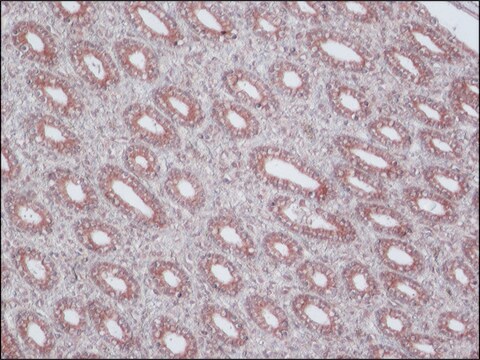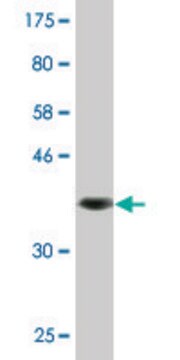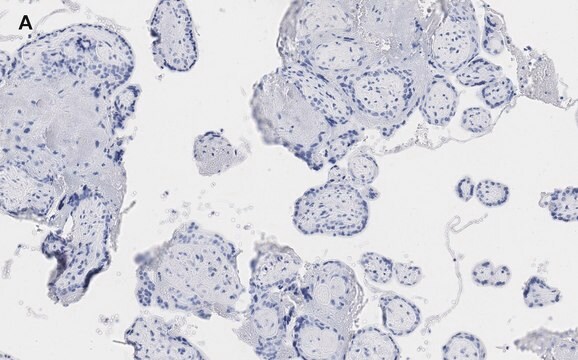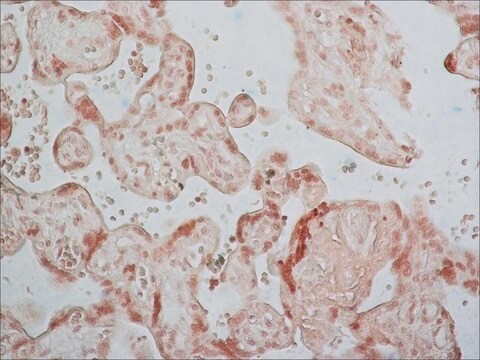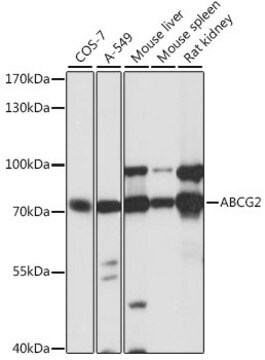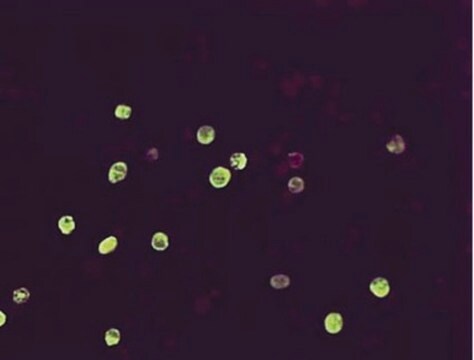MAB4145
Anti-BCRP Antibody, clone BXP-34
culture supernatant, clone BXP-34, Chemicon®
Sinônimo(s):
Breast Cancer Resistance Protein, Placenta-specific ATP Binding Cassette Transporter, ATP-binding Cassette, Sub Family G, member 2 (ABCG2)
About This Item
Produtos recomendados
fonte biológica
mouse
Nível de qualidade
forma do anticorpo
culture supernatant
tipo de produto de anticorpo
primary antibodies
clone
BXP-34, monoclonal
reatividade de espécies
human
fabricante/nome comercial
Chemicon®
técnica(s)
immunocytochemistry: suitable
immunohistochemistry: suitable
entrada
sample type hematopoietic stem cell(s)
sample type neural stem cell(s)
Isotipo
IgG1
adequação
not suitable for Western blot
not suitable for immunohistochemistry (Paraffin)
nº de adesão NCBI
nº de adesão UniProt
Condições de expedição
wet ice
modificação pós-traducional do alvo
unmodified
Informações sobre genes
human ... ABCG2(9429)
Descrição geral
Especificidade
Imunogênio
Aplicação
Immunohistochemistry: 1:20 on acetone fixed frozen tissue sections
Not suitable for paraffin-embedded tissues or for Western blotting
Optimal working dilutions must be determined by end user.
Stem Cell Research
Hematopoietic Stem Cells
Descrição-alvo
forma física
Armazenamento e estabilidade
Nota de análise
MCF-7 cells
Outras notas
Informações legais
Exoneração de responsabilidade
Não está encontrando o produto certo?
Experimente o nosso Ferramenta de seleção de produtos.
recomendado
Código de classe de armazenamento
10 - Combustible liquids
Classe de risco de água (WGK)
WGK 1
Certificados de análise (COA)
Busque Certificados de análise (COA) digitando o Número do Lote do produto. Os números de lote e remessa podem ser encontrados no rótulo de um produto após a palavra “Lot” ou “Batch”.
Já possui este produto?
Encontre a documentação dos produtos que você adquiriu recentemente na biblioteca de documentos.
Nossa equipe de cientistas tem experiência em todas as áreas de pesquisa, incluindo Life Sciences, ciência de materiais, síntese química, cromatografia, química analítica e muitas outras.
Entre em contato com a assistência técnica